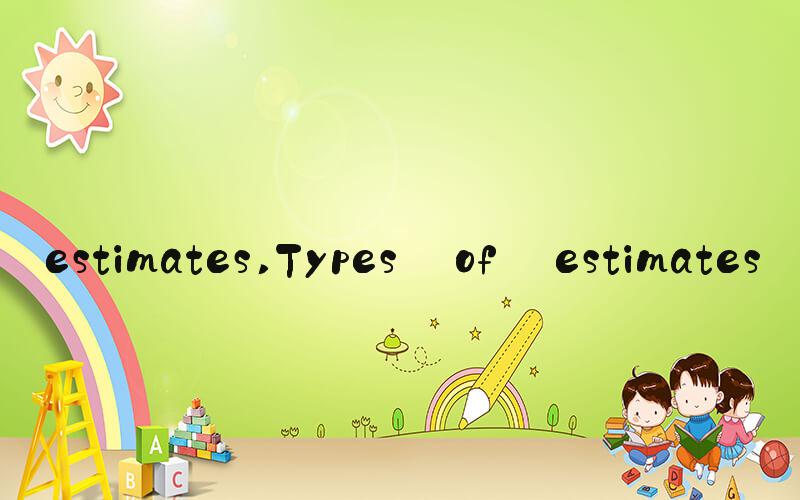AI答案
 Introduction
IntroductionEstimates are predictions or projections of future events or conditions based on available information and assumptions. They play a critical role in decision making for individuals, businesses, and governments. Inaccurate estimates can have significant consequences, leading to misallocation of resources, financial losses, and missed opportunities. Therefore, it is essential to understand the principles and best practices of estimating to increase the chances of success.
Types of estimatesThere are various types of estimates, depending on the context and purpose. Some common types include:
Budget estimates: These are estimates of the costs and revenues of a project or operation. They are essential for planning and control purposes and can be used to evaluate the financial viability of a venture.
Forecast estimates: These are estimates of future trends or events based on past data or statistical models. They are used for long-term planning and risk assessment.
Expert estimates: These are estimates based on the opinions and judgments of knowledgeable and experienced individuals. They are often used in situations where there is a lack of data or uncertainty.
Bottom-up estimates: These are estimates that are derived by breaking down a project into smaller components and estimating each component's cost or effort. They are useful for complex projects or operations.
Top-down estimates: These are estimates that are derived by using historical data or benchmarks to estimate the overall cost or effort of a project or operation. They are useful for simple projects or operations.
Factors affecting estimatesSeveral factors can affect the accuracy and reliability of estimates. It is essential to consider these factors and adjust the estimates accordingly to increase their validity.
Assumptions: Estimations are based on various assumptions about the future, such as market trends, regulatory changes, and technology advancements. If the assumptions are faulty, the estimates may be inaccurate.
Data quality: The accuracy and reliability of estimates depend on the quality and completeness of the data used. If the data is incomplete or unreliable, the estimates may be inaccurate.
Expertise and experience: The accuracy and reliability of estimates depend on the expertise and experience of the estimator. If the estimator lacks the necessary knowledge or experience, the estimates may be inaccurate.
Risk: The estimates should take into account the risk of unforeseen events or conditions that may affect the outcome. If the risk is not adequately considered, the estimates may be overly optimistic or pessimistic.
Uncertainty: The estimates should acknowledge the uncertainty inherent in predicting the future. If the uncertainty is not adequately considered, the estimates may be overly confident or vague.
Best practices for estimatingThere are several best practices for estimating that can increase the accuracy and reliability of estimates:
Use multiple methods: Using multiple estimating methods can provide a more comprehensive view of the future and increase the chances of detecting errors or biases.
Be transparent and documented: Estimating should be transparent and documented to enable evaluation and review. The assumptions and data sources should be clearly stated to increase clarity and credibility.
Involve stakeholders: Estimating should involve stakeholders such as clients, suppliers, and experts to ensure that their views and needs are considered. This can increase buy-in and reduce the risk of conflicts.
Update regularly: Estimating should be updated regularly to reflect new information or changes in assumptions or contexts. This can increase the relevance and reliability of estimates.
Evaluate and learn: Estimating should be evaluated and learned from to improve future estimates. This can increase the quality and effectiveness of estimating processes.
ConclusionEstimates are essential for decision making and planning. They play a crucial role in various fields such as business, engineering, and public policy. However, accurate and reliable estimates require careful consideration of various factors such as assumptions, data quality, expertise, risk, and uncertainty. By following best practices such as using multiple methods, being transparent and documented, involving stakeholders, updating regularly, and evaluating and learning, estimators can increase the validity and usefulness of estimates.
